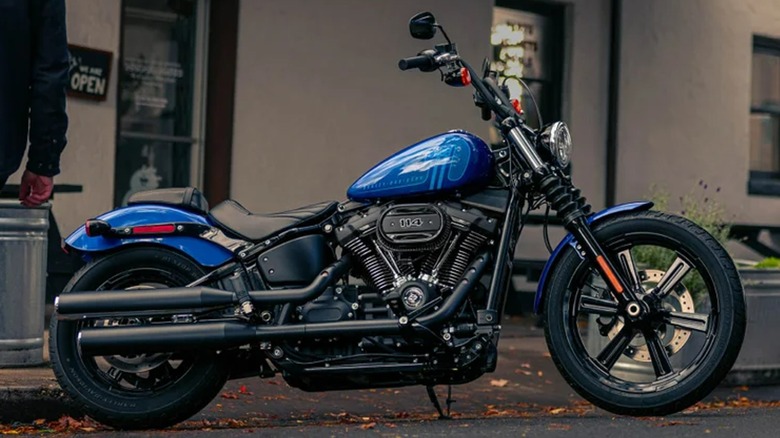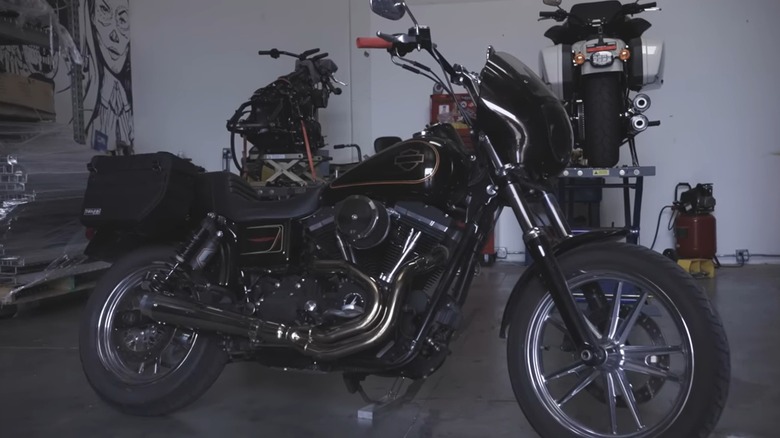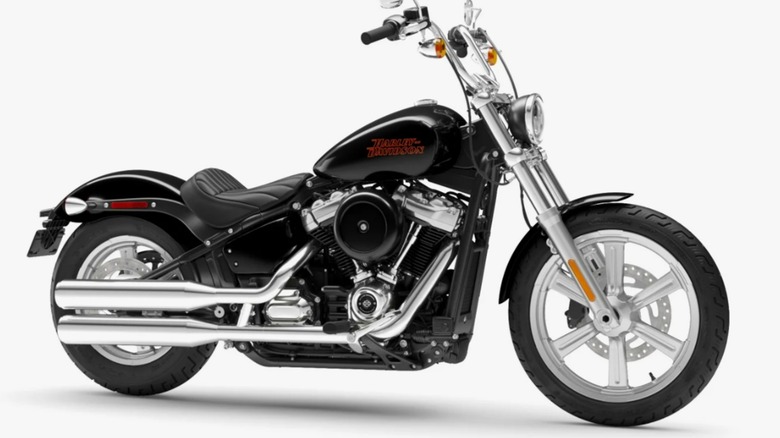Harley-Davidson Dyna Vs. Softail: What's The Difference Between These Frame Types?
Harley-Davidson motorcycles have been around for over a century, and in that time, the brand behind them has found new ways to innovate in terms of looks and function. Harleys can come in a range of colors, there are numerous Harley engines out there to choose from, and there are a few different frame types to consider, among other aspects, when preparing to drop some cash on a new ride.
Different Harley-Davidson frame types offer different riding experiences, which is why choosing the right one is so important. Want a classic look but don't need maximum comfort for long rides? The rigid Hardtail is the one for you. What about something lighter that doesn't compromise on speed or maneuverability? Then your best bet is a Sportster. Two of the more popular modern frame types are the Dyna and the Softail, but the differences between them aren't so well-known among casual Harley fans.
Here are the biggest takeaways regarding the Dyna and Softail Harley-Davidson frame types.
Dyna and Softail cater to different riders
The Harley-Davidson Softail, which came to fruition way back in 1983, is the older of the two frame types. They're characterized by their hidden rear suspension, courtesy of mechanical engineer Bill Davis, which was implemented to make for a more comfortable riding experience compared to the older, more rigid Hardtail style. Modern Softails come equipped with a Milwaukee-Eight 107 V-twin engine, packing power and speed. Digging deeper, there are some key distinctions between the Harley-Davidson Softail and Heritage Softail Classic, such as their engine types and overall size and maneuverability. Recent iterations of the Softail Standard have an MSRP around $15,000, with some model variants reaching thousands of dollars more.
The Dyna frame officially debuted in 1991 and stuck around as its own entity until 2017. Similarto the Softail, the Dyna is well-known for its suspension system, in this case the exposed dual-shocks at the rear. In the waning days of Dyna frames, they were constructed to accommodate an air-cooled Twin Cam 103 engine. They tend to vibrate considerably more than the average Softail, but on the whole, they're generally recommended among riders for their manageable weight and solid handling. Years after their discontinuation, most Dynas tend to be a bit more affordable when put up against Softails.
The end of the Dyna marked a new era for the Softail
At the time of this writing, the Dyna has been retired for almost a full decade, yet it hasn't been lost to time by any means. The Dyna remains an appreciated and widely-ridden frame type, even if it's unlikely to return to the spotlight any time soon. After all, when the Dyna was put on ice in 2017, it wasn't simply tossed aside. Rather, the line was effectively absorbed by the Softail, marking a new era for the latter with several notable changes.
Kicking off in 2018, the next generation of post-Dyna Softails included a few major tweaks. Powered by a Milwaukee-Eight V-twin engine with either a 107ci or 114ci displacement, these bikes came with a brand new, significantly stiffer chassis, an underseat shock, and a new, retooled frame. This Softail frame improved handling and the overall ride experience by dropping some weight — up to 35 lbs in some cases. Parts commonality throughout the year's lineup also opened up a previously unseen level of customizability.
The Dyna is and will remain a classic frame style celebrated among Harley-Davidson enthusiasts, but new and old Softail designs aren't to be counted out. They come with their share of strengths as well. So, as far as which is the better option, that call comes down to your individual aesthetic tastes and riding style.


